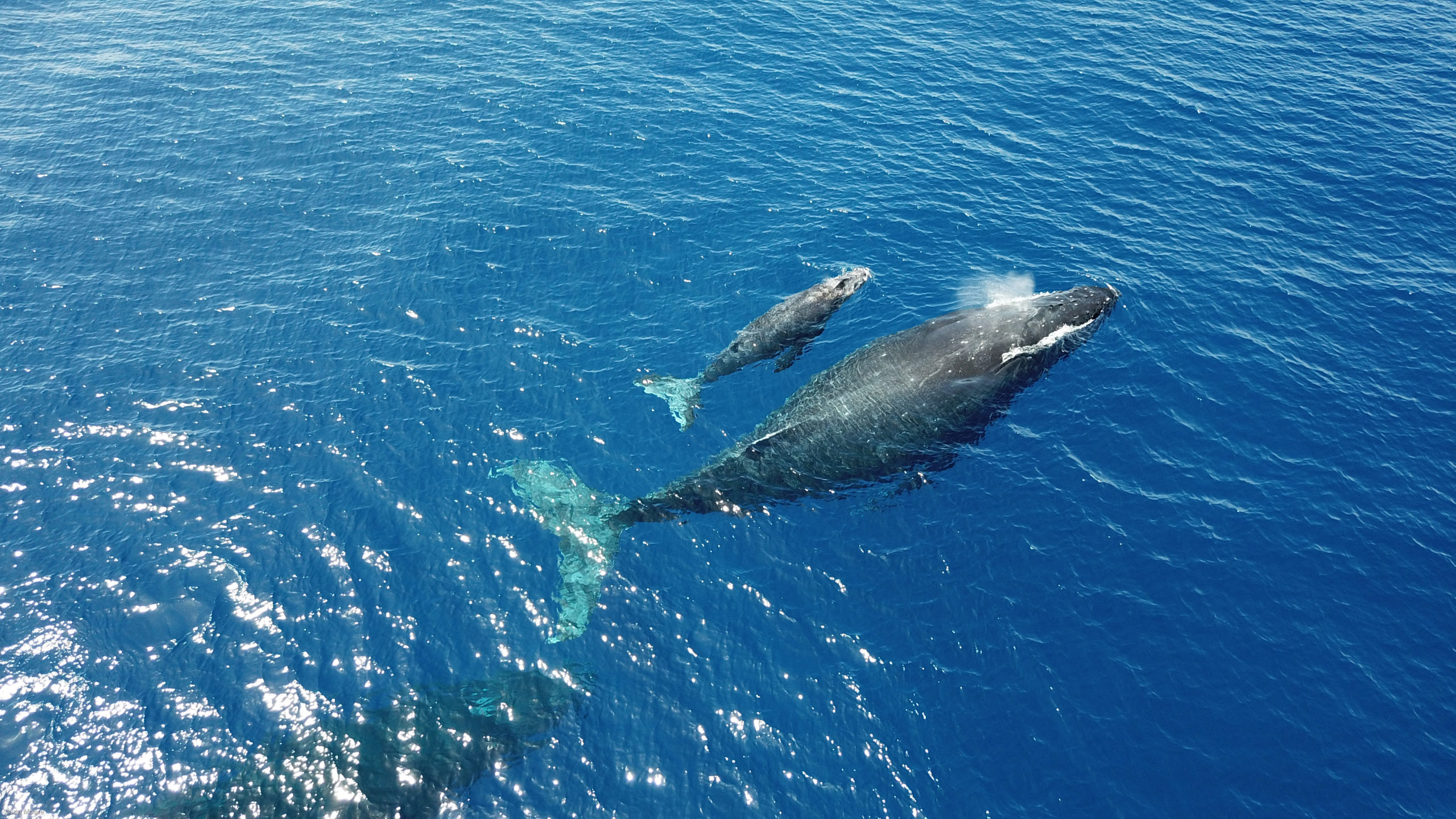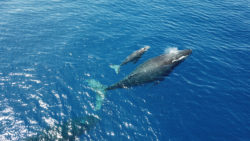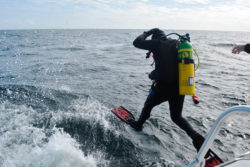
Noise Pollution 101

A humpback whale mother and calf in Hawaiian Island Humpback Whale National Marine Sanctuary. Marine mammals are especially sensitive to sound as it affects how they communicate. Photo: J. Moore/NOAA, under MMHSRP permit #20311
You might not consider noise a source of pollution, but the din of human activity affects animals all over the globe, including humans. In the marine environment, where sound is critical to marine animals of all shapes and sizes, added noise can be especially harmful, affecting their ability to navigate, communicate, forage, and evade predators. Excess noise can even disrupt social behavior and reproduction, adding challenges to conservation recovery efforts of the most endangered species like North Atlantic right whales. But what exactly is noise pollution and why exactly is it such a problem?
What is noise pollution?
Noise pollution is not the same as other types of pollution that we might be able to see – think plastics, contaminated wastewater, and lost fishing gear. Noise pollution is sound-based and can be short or long-term in nature, but it is any unwanted sound that causes a disturbance that affects the normal behavior and well-being of people, animals, or both. Sound is a constant in our lives and can be measured in decibels, with larger measures indicating louder volumes. A light breeze makes a sound of around 30 decibels while a jet take-off reaches 150 decibels or more. In humans, sounds that exceed 85 decibels can permanently damage our hearing and cause other problems like high blood pressure, sleep disturbances, and decreased attention.
What types of noise pollution exist in the ocean?
Human activities that create noise pollution underwater include shipping, recreational boating, energy exploration, military sonar, vessel sounds, and seismic blasts. Many of these occur persistently and in combination with others to create a noisy environment and increase the decibel level. Over the last century, we have become increasingly noisy as the frequency of these activities increased to support business development, transportation, and energy needs all over the world.
Why is noise pollution a problem in the ocean?
Sound is nothing more than vibrational waves that travel through a medium like air or water. Most animals have eardrums or some sensory organ like them that detects these vibrations and delivers them to the brain for processing and interpretation. In the water, sound waves can travel long distances, and unlike sound waves traveling through the air, sound in the ocean often reverberates, hits the seafloor or some other structure, and creates loud crashing sounds. The presence of sound itself isn’t the problem, but the fact that it interferes with how marine animals live their lives is. Whales, dolphins, and porpoises are animals famous for their use of echolocation and vocalizations to understand and navigate the environment around them and communicate with other animals. When added noise enters their environment, they can’t perceive their surroundings as well and they may lose the ability to communicate with each other, the same trouble you would have holding a meaningful conversation with a friend at a rock concert.
What are the consequences of noise pollution in the ocean?
Some noise is tolerable if it is temporary or at a reasonable level. Unfortunately, the number of ways we use the ocean is almost always adding noise to the ocean, and the sum of all of those activities is quite loud and persistent. Additionally, seismic blasts (explosions) create individual instances of very loud noise and have effects that are harmful in different ways than persistent noise. Noise can do everything from scare animals from their habitats, raise stress hormones, alter their feeding behavior, or affect how they care for their young. Marine mammals, which are highly sensitive to sound, often strand in large numbers after sonar testing or other extreme sound events. If animals are deep beneath the surface when these events occur and swim too quickly toward the surface, they can damage their eardrums, throw off their sense of balance and buoyancy, get the bends, or even kill them, similar to a SCUBA diver that surfaces too fast.
What can we do about ocean noise?
The good news is that individuals and organizations can take action to reduce ocean noise. For individuals, it could be as simple as slowing your boat’s motor during a recreational fishing trip when you know animals like manatees and dolphins are around. Scientists and governmental organizations are learning more about noise pollution in the ocean, how it affects animals, and how we might balance human and animal needs to make sure we aren’t causing unnecessary harm. For example, NOAA and the Office of National Marine Sanctuaries’ approach to managing ocean noise aims to reduce negative physical and behavioral impacts to species, as well as conserve the acoustic quality of their habitats. Many national marine sanctuaries are researching noise pollution and mitigating factors to see how it affects the animals that call their waters home. Here are some:
Want to know more about ocean noise? Click here to visit the National Ocean Service’s fact page that includes helpful links and educational resources. You can hear the natural sounds of the ocean by listening to the acoustic soundscape recordings in Gray’s Reef National Marine Sanctuary. Listen to the Atlantic here.

In December 2015, two hydrophones were deployed in Gray’s Reef National Marine Sanctuary to help researchers gather acoustic informatoin. This NOAA diver helped affix a hydrophone to its buoy. Photo Credit: Alison Scott/NOAA
